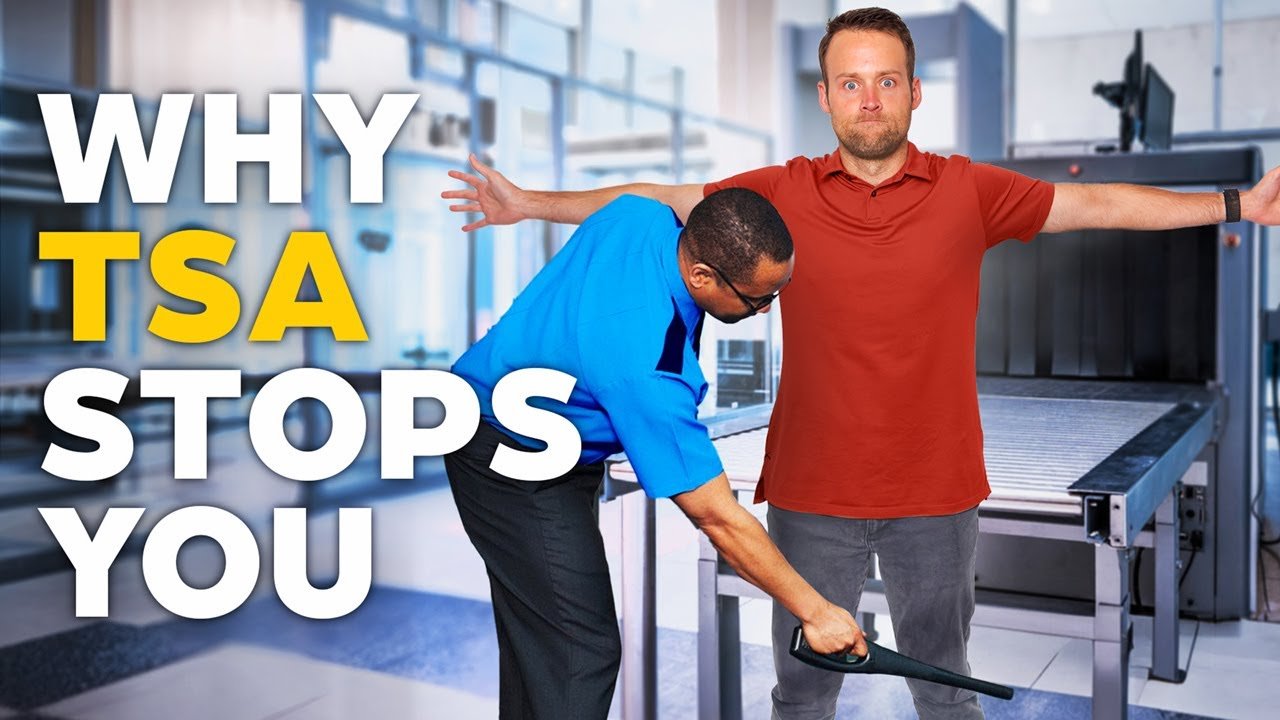Flying can be a breeze, but a few innocent actions might turn your trip into a bumpy ride through security. You’re about to discover behaviors that, surprisingly, catch the TSA’s attention—behaviors that might seem harmless but can flag you for additional screening. The team’s advice will help you navigate these pitfalls, ensuring a smoother airport experience by watching your actions and understanding what sets off those alarms.
Everyone loves a comfy outfit, especially when you’re miles high in the sky. However, certain attire choices can raise eyebrows, leading TSA agents to take a closer look. Alongside clothing, how you handle your belongings and interact with security personnel can also shape your airport journey. With these insights into common TSA red flags, you’re better prepared to glide through security confidently and enjoy your travels without unexpected detours.
Unusual Behavior in Security Lines
Navigating airport security can sometimes feel like a mystery, but understanding how certain behaviors can raise alarms is key to a smoother experience.
Switching Lines Without Permission
Communicating your intentions at security lines is crucial. When you switch lines without permission, such as stepping out from a full-body scanner queue to a metal detector line, you may unintentionally raise suspicions. You might have valid reasons for your choice, but it’s important to inform TSA agents of such a decision. You have the right to choose not to go through body scanners, but doing so silently can complicate your journey.
Opting Out of Scanners Without Communicating
The TSA allows you to opt-out of body scanners, but this decision must be communicated. Failing to verbally inform the security personnel and just moving towards a different checkpoint can signal unwillingness to comply, drawing unnecessary attention. A simple conversation with the agent can help clarify your intentions and keep the process smooth.
Excessive Anxiety and Nervousness
Many people feel nervous at airports, especially with tight schedules and crowded spaces. While understandable, excessive anxiety or nervousness can be interpreted as suspicious behavior. It’s natural to feel anxious about flying, but managing stress and maintaining calm can help avoid unwanted attention from security personnel who are trained to notice these cues.
Inappropriate Attire for Travel
Choosing the right attire for travel not only ensures comfort but also eases your security process.
Wearing Baggy or Loose Clothing
While comfort is a priority during flights, extremely loose clothing can be problematic at checkpoints. Baggy clothes might raise suspicions, as they could potentially hide prohibited items. Opt for comfortable yet well-fitted outfits to avoid unnecessary scrutiny.
Seasonal Mismatches in Clothing Choices
Wearing clothes that don’t match the current season or your destination’s climate can also catch the TSA’s attention. For instance, a heavy coat in the middle of summer might prompt further checks. Dressing according to the climate and your itinerary helps maintain a low profile.
Clothes That Might Raise Suspicions at TSA
Certain clothing items may inadvertently raise suspicions. Apparel with lots of pockets, thick fabric, or unusual designs might require additional examination. Opting for simple and straightforward outfits can help you pass smoothly through security checkpoints.

This image is property of i.ytimg.com.
Carrying Large Sums of Cash
While traveling with money is sometimes necessary, carrying large sums of cash can complicate your trip.
Why It’s a Red Flag for TSA
Carrying large amounts of cash might suggest illicit activities and can draw extra attention from security personnel. TSA agents are trained to spot potential trafficking or money laundering, and a large stash of cash fits the bill of suspicious activity.
Declaring Large Amounts to Avoid Trouble
If you’re traveling with a significant amount of money, declare it. Transparency with TSA officials can prevent misunderstandings and avoid complications. Many countries also have specific regulations on cash declarations, so being aware can save time and stress.
Alternatives to Cash During Travel
Consider alternatives such as credit and debit cards, travel vouchers, or digital payment methods. These options not only provide security and convenience but also minimize the need to carry large sums of cash, ensuring a safer and smoother travel experience.
Transporting Common Suspicious Items
Even everyday items can complicate your journey through security if not handled wisely.
Coffee as a Smuggling Cover
Believe it or not, large quantities of coffee can raise red flags. Smugglers have historically used coffee to mask the scent of contraband, prompting added scrutiny. Stick to smaller amounts or place such items in checked luggage to avoid unnecessary delays.
Devices That Can’t Be Powered On
Electronic devices unable to power on during checks can lead to concerns about their legitimacy. Ensure your gadgets are fully charged before your security screening, as TSA may require them to be operative to verify they are not used for illicit purposes.
Items That Can Mask Scent or Appearance
Certain items are known for their ability to mask scents or alter appearances, raising suspicions at security screenings. Be mindful of carrying items like powerful scents or unusual packaging, as they could trigger a more thorough examination.

Displaying Suspicious Behaviors
Body language and interactions with TSA officers are as crucial as what you pack.
Chatting Excessively with TSA Officers
While it’s okay to be friendly, excessive chatting with TSA officers might be perceived as an attempt to distract them. Keep interactions polite and straightforward to maintain a smooth flow through security checks.
Yawn, Whistle, or Excessively Complain
Simple actions like yawning excessively, whistling, or making unnecessary complaints may unwittingly attract attention. Such behaviors can be perceived as signs of nervousness or attempts to divert attention, so it’s best to keep demeanor neutral and cooperative.
Anomalies Checked by TSA Behavioral Detection
TSA uses behavior detection techniques to spot potential threats. These include looking for signs of stress, fear, or anxiety that aren’t typical for most travelers. While these processes are sometimes criticized for subjectivity, being aware of your behavior can help mitigate unnecessary inspections.
Ignoring Protocols and Rules
Staying informed about regulations can save you from potential hassles.
Not Removing Liquids from Baggage
One common mistake is forgetting to remove liquids from your carry-on baggage. TSA rules require liquids to be in containers of 3.4 ounces or less and placed in a clear quart-sized bag for separate screening. Neglecting this rule can lead to delays or confiscation of items.
Failure to Charge Electronic Devices
Electronic devices that cannot be powered on can cause complications during screening. Ensure your devices are charged, as TSA may require them to be turned on to check for hidden modifications or contents.
Ignoring Official Instructions
Listening and adhering to TSA officials’ instructions can prevent many common issues. Whether it’s guidelines on electronics, clothing, or general conduct, following official advice ensures a quicker and more efficient security check process.

Behaviors Linked to Concealment
Certain body language or demeanor changes can unintentionally suggest concealment.
Body Language that Suggests Hiding Something
Body language is a powerful communicator, and certain behaviors, like fidgeting or restlessness, can suggest concealment of prohibited items. It’s natural to feel tense, but maintaining calm and confident body language can help you avoid unnecessary suspicion.
Suspicious Changes in Demeanor
Sudden shifts in demeanor, such as becoming uncharacteristically quiet or evasive, may prompt further attention from security personnel. Consistent and relaxed behavior is less likely to trigger security concerns.
Signs of Disguise or Modification
Apparent attempts to disguise one’s identity or modify appearance can raise red flags at security checkpoints. Travelers who appear to be in disguise might be subjected to additional scrutiny, so it’s best to remain as authentic as possible.
Common Travel Challenges
Everyone encounters challenges when traveling, but some behaviors can create unnecessary complications at airports.
Running Late and Rushing
Running late can often lead to rushed decisions and missed procedures at checkpoints. While it’s common to find yourself pressed for time, planning ahead and arriving early can create a calmer experience and help avoid hasty mistakes.
Struggling With Language Barriers
Language barriers can add stress, making communication with TSA agents problematic. If possible, familiarize yourself with basic travel vocabulary or use translation apps to ease communication and reduce misunderstandings.
Procrastinating Check-in Procedures
Delaying online check-ins or baggage preparations can lead to last-minute stress, resulting in more mistakes at security. Preparing in advance allows for a smoother and more relaxed check-in process, laying the groundwork for a hassle-free airport experience.
Subjective Indicators of Suspicion
Understanding the subjective nature of security screenings can help manage expectations.
The Issue of Subjectivity in Screening
Security screening often involves subjective assessment, which means different agents might interpret behaviors and items variably. It’s important to be aware of this variability and approach each checkpoint with patience and understanding.
Governmental Review and Criticism
The TSA’s methods and the subjectivity involved in behavior detection have been criticized and reviewed by governmental bodies. Such scrutiny suggests there are ongoing evaluations for improvements, highlighting the complexity of maintaining effective yet fair screening processes.
Lack of Scientific Backing for TSA Methods
Some TSA strategies lack strong scientific backing, questioning their efficacy. This doesn’t negate the need for security, but it’s useful to remember that the process isn’t always perfect and continually evolving in response to research and feedback.
Conclusion
Acknowledging the Need for Safety
While some TSA rules might seem excessive, they are in place for collective safety. Understanding these measures can help you navigate the system more effectively.
Potential for System Improvements
There is always room for improvement in any system. Acknowledging the criticisms of current TSA practices paves the way for potential enhancements in efficiency and fairness, ultimately creating a better experience for travelers.
Tips for Smoother TSA Experiences
To minimize hassles, be prepared: adhere to luggage guidelines, maintain a calm demeanor, and communicate openly with TSA personnel if you have specific needs. These steps can increase your chances of a smoother security experience, leaving you to enjoy your travels with less stress. Safe travels!
Some of the links on this site are affiliate links, which means I may earn a small commission if you click on them and make a purchase, at no additional cost to you. As an Amazon Associate, I earn from qualifying purchases.

